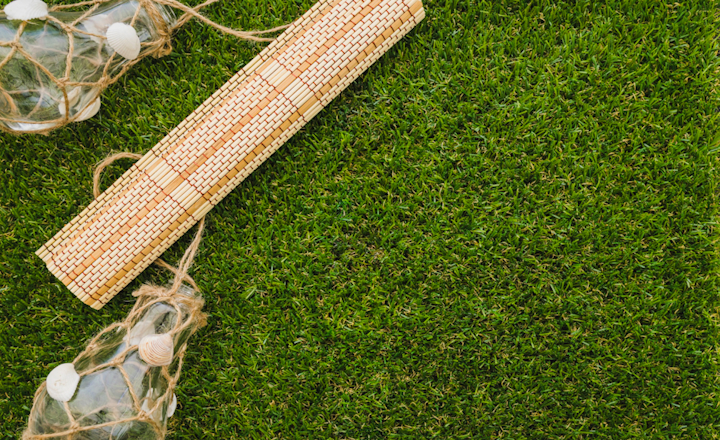
Once upon a time most field sports were played on a wide pitch of soft, living green grass. Now, like so much else in this age of technology and industry, things have changed, and most professional sports take place on a field of plastic blades of artificial grass. While still green for the most part, this faux grass has some advantages over its living model that have made it the rule as opposed to the exception.
Artificial turf was first put into use in 1966 when the Houston Astrodome, the first domed sports stadium in the USA, installed it as a replacement for the natural grass that was turning yellow and dying from the lack of natural light under the dome! This caused a boom in both artificial sports turf and domed stadiums! The artificial turf is composed of synthetic fibres, a bottom sheet, and a coloured coating that makes it appear to the eye as if it is real grass, an illusion that is soon shattered when you sit down and roll on it.
The artificial turf of today, while still not a double for real live grass, has come a long way in sophistication since the 1960s, being softer and more resilient than its forerunners in order to alleviate complaints from athletes over hard falls and heat burns from the plastic blades! This new, improved artificial turf has escaped the domes and can be found applied to outdoor sports fields, such as football and rugby pitches, and even golf courses, and is also in wide use in urban residential and public areas like parkways, city parks, and playgrounds.
In addition to the fact that it never needs to be watered, an important consideration in today's increasingly dry climate, artificial sports turf can be played upon in all kinds of weather. If it rains the water simply drains away from the slightly crowned centre of the field, never developing into boggy areas or puddles in the way that real grass allows. This excellent drainage capability means play can go on even in the wettest conditions!
Despite their basic pleasantness, natural grass fields can grow worn down and uneven over time, causing unsafe conditions for play. Artificial turf features a consistent surface that has been designed to be soft and a bit springy, greatly reducing the risk of sports injuries. The artificial turf also gives the players better traction, reducing the risk of slips and falls.
Artificial turf has another fun feature that real grass can't match, the ability to customize its appearance to match a team’s logo, team colours, or whatever you like! Natural grass, even when carefully kept, is never quite uniform in appearance, with dark and light patches, while artificial turf is always the same vibrant green.
Australia's State of New South Whales has performed an independent review on the use of artificial grass for sports facilities and other public spaces. So, the next time you pick a blade of grass to chew on, if it tastes like plastic, you are in the wrong field!




